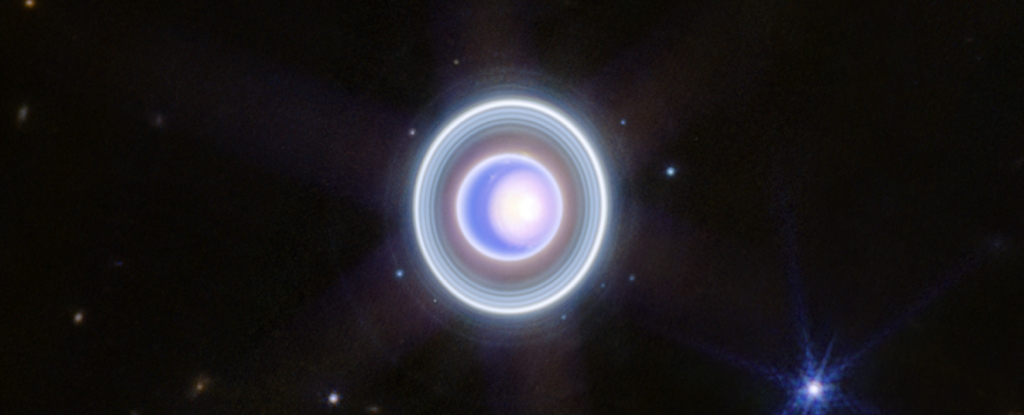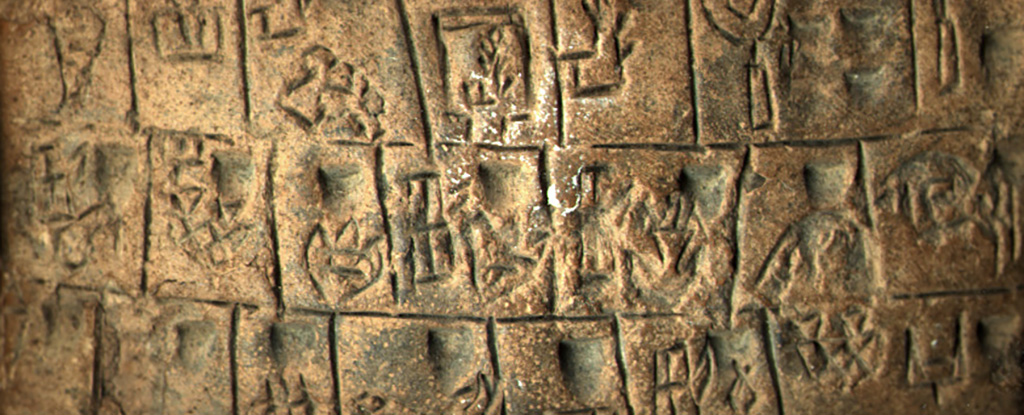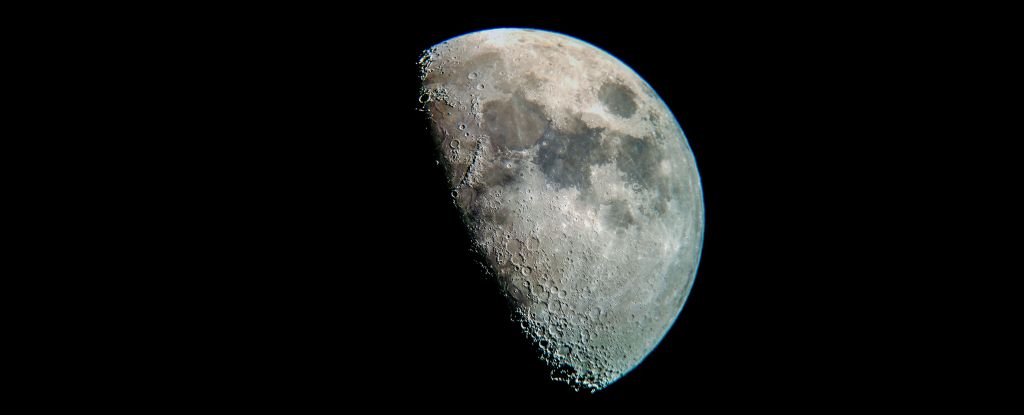For decades, we’ve thought we had a pretty good grasp of Uranus.
The penultimate planet, our best measurements suggest, has a whole slew of idiosyncrasies. And one of the most puzzling is its magnetic field. According to measurements taken by Voyager 2 when the NASA probe conducted a flyby in 1986, Uranus’s magnetosphere is a hot mess – off-center and off-kilter, unlike anything else in the Solar System.
This has informed how we think about Uranus ever since, making the planet’s history a mystery scientists have been working to solve.
There’s just one problem, says space plasma physicist Jamie Jasinski of NASA’s Jet Propulsion Laboratory at the California Institute of Technology: Uranus’s magnetic field probably isn’t hinky most of the time.
Jasinski and his team have undertaken a new analysis, and discovered that the Voyager 2 flyby probably took place during a brief window when solar activity was messing with Uranus, taking observations inconsistent with the norm.
frameborder=”0″ allow=”accelerometer; autoplay; clipboard-write; encrypted-media; gyroscope; picture-in-picture; web-share” referrerpolicy=”strict-origin-when-cross-origin” allowfullscreen>
“The scientific picture of Uranus that we have had since the Voyager 2 flyby is that it has an extreme magnetospheric environment. But I always thought that maybe the Voyager 2 flyby of Uranus just happened to occur during some strange activity rather than it being like that generally,” Jasinski told ScienceAlert.
“I started looking at the solar wind data at Uranus, and then once I saw that Voyager 2 measured a dramatic increase in the solar wind dynamic pressure just before the flyby, I realized that the magnetosphere must have been squashed to 20 percent of its volume just before the flyby happened, which would have affected the discoveries we made with Voyager 2!”
The importance of Voyager 2’s measurements of Uranus and its environment cannot be overstated. They’re the best and closest observations we’ve made of the planet to date, vital to our understanding of the stinky outer planet. Uranus is very far away, very different from Earth, and difficult to get to, so exploration efforts have mostly been directed to closer targets.
But our Solar System isn’t static, so any observations we make must be interpreted in the context of the vagaries of the space weather occurring at the time. Voyager 2 showed a Uranian magnetosphere unlike anything we’d see, with intense radiation belts and much less plasma than we’d usually expect to see, based on the other planets.
Jasinski thought that context might be missing from the Uranus observations after his work on NASA’s MESSENGER mission, which studied the planet Mercury.
“Out of thousands of orbits around the planet over a four-year period, we had these rare occasional times where activity from the Sun completely eroded the entire magnetic field,” he explained.
“That really highlighted to me that if we had made an observation during one of those events, we would have a very different idea of Mercury. So, could we have observed Uranus during a strange time also? The Voyager 2 flyby of Uranus lasted just five days, so I thought we may have observed Uranus at just the wrong time.”
This prompted the team to go back and reexamine the data collected by Voyager 2 in the week before the Uranus flyby. The researchers were bang on the money: the dynamic solar wind pressure had increased by a factor of 20 just before the flyby took place.
This means that outflows from the Sun – streams of particles escaping in a constant solar wind – had increased during the flyby, creating an environment around Uranus that is present less than 5 percent of the time, the team estimates.
“We knew this meant that the Voyager 2 flyby occurred under very special circumstances. The magnetosphere would have been squashed to about 20 percent of its original volume in those few days before we entered the magnetosphere, and this would have increased activity and dynamics,” Jasinksi said.
“I was surprised that this had happened, but there was also a moment of clarity where suddenly all the strange Voyager 2 measurements finally made sense to me.”
If the solar wind was flowing at its normal rate, then Uranus’s magnetic field would look more like the magnetic fields of the other gas giant planets of the Solar System, Jupiter, Saturn, and Neptune.
frameborder=”0″ allow=”accelerometer; autoplay; clipboard-write; encrypted-media; gyroscope; picture-in-picture; web-share” referrerpolicy=”strict-origin-when-cross-origin” allowfullscreen>
It’s a discovery that has multiple implications. We might need to rethink how Uranus works, for one. Based on Voyager 2’s measurements, scientists had hypothesized that the interior of Uranus, where the magnetic field is generated, was somehow unique in the Solar System. That presumption might need to be revised.
One brief flyby is never going to provide enough data to fully understand the way a planet works. Scientists have been pushing for a mission to study Uranus and Neptune; this would give us the data we need to confirm the findings of Jasinski and his team, and learn more, not just about Uranus, but its system of moons, too.
“The dramatic squashing of the magnetosphere could have driven all the water out of the system, and eradicated any evidence of activity from the moons just before Voyager 2 got there, changing the discoveries we made from the flyby. If Voyager 2 had arrived a week earlier it would have observed a completely different magnetospheric environment,” Jasinski told ScienceAlert.
“It just shows how dynamic this system really is. This is such a mysterious planet. We really do need to go back there and explore it further.”
The research has been published in Nature Astronomy.





